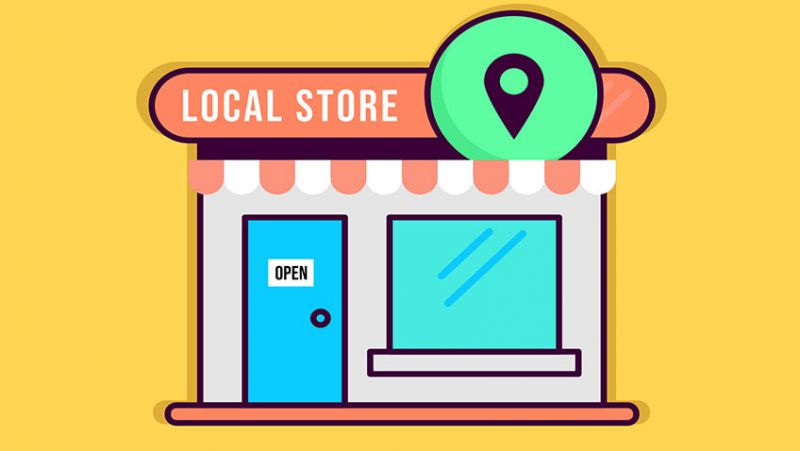
Starting a small business is an exciting journey — but spreading the word and attracting customers requires more than just passion. Advertising helps you get noticed by the right audience and gives your business the competitive edge it needs in the busy UK market. Whether you’re a solo tradesperson, an interior design consultant, a home décor enthusiast, or running a small workshop, this beginner's guide to advertising is tailored to suit your path to business growth.
This guide will break down the basics of small business advertising, offering simple, effective strategies designed to connect you with homeowners, DIY enthusiasts, designers, and professional architects — all across the UK. Let's help your business stand out and thrive.
Understanding the Importance of Advertising
Advertising isn’t just about selling a product or service. It’s about telling your story and showcasing what makes your business unique. Especially in the highly visual, design-focused industries such as home improvement, interior décor, and architecture, an effective ad campaign can help you build credibility and recognition.
Good advertising creates awareness — and for small businesses, that often means building a presence in your local community and beyond. Whether you're installing bespoke shelving, offering architectural design services, or supplying handmade tiling, your excellent work deserves a spotlight.
For customers to trust your brand, they need to see it. And that requires you to get your name in front of them — consistently and professionally. Advertising helps you do just that. It's not only about reaching more people, but also the right kind of people — those who are already looking for what you do.
From young professionals redecorating their first flat in London to homeowners upgrading their kitchen in Yorkshire, targeted advertising ensures that your message reaches your ideal clientele where and when it matters most.
Setting Your Advertising Goals
Before diving into different advertising tactics, take time to define your goals. Are you looking to:
- Increase your brand visibility in your local area?
- Drive more traffic to your website or online store?
- Get more leads for installations or consultations?
- Promote a seasonal offer or new product line?
Clear goals will influence the type of advertising you should focus on. For example, if your aim is to reach homeowners in the Midlands looking to renovate, local newspaper ads, social media targeting, or Google Ads set for specific postcodes could be the most effective routes.
Setting realistic Key Performance Indicators (KPIs) is helpful. Metrics like website visitors, phone call inquiries, social media reach, click-through rates, and conversion rates will allow you to see what’s working and adjust accordingly.
Types of Advertising for Small Businesses
There are two main advertising categories — online and offline. Small businesses often benefit from a mix of both, depending on budget, target market, and geographic location. Let's briefly explore the options available.
Online Advertising
- Social Media Ads: Perfect for visual businesses like decorators and interior designers. Platforms like Facebook, Instagram, and Pinterest let you showcase before-and-after images of your projects, share testimonials, and advertise to specific audience segments (like age, UK location, homeownership, interests in DIY).
- Google Ads: These ads show up on search results when someone types “bathroom fitters in Manchester” or “UK handmade kitchen tiles.” With correct keywords, your ad appears only to the people looking for your type of service or product.
- Display Advertising: Visual banner ads placed on websites your audience may visit — think home improvement blogs or trade forums.
- Local SEO and Google Maps Ads: If you provide a service in a defined area, appearing in local results is crucial. Google Maps ads put you in front of people searching for nearby solutions.
Offline Advertising
- Local newspapers and magazines: Still highly effective—especially for home-related businesses. Think regional lifestyle or property development publications.
- Flyers and posters: Ideal for local promotions, distributing in community centres, cafés, trade supply stores, or property showrooms.
- Vehicle branding: A moving billboard. If you’re a mobile tradesperson, wrapping your van with your branding is an excellent way to gain visibility.
- Trade and home fairs: Advertising via exhibition stands and leaflets at local exhibitions or weekend markets gets you face-to-face with interested customers.
Crafting Your Message: What to Say
Once you know where to advertise, the next step is knowing what to say. Good advertising isn’t about listing every service you provide — it’s about highlighting the benefits to the customer.
For example, instead of saying “We install built-in wardrobes,” try “Maximise space in your home with custom-built wardrobes delivered and installed by experts.” You're not just offering a service; you're providing value and solving a problem.
When crafting your message, follow this basic formula:
- Headline: Grab attention (“Need more storage in your London flat?”)
- Description: Explain quickly what you offer and why you’re unique
- Call to action (CTA): “Request a free quote,” “Book online now,” “See our gallery”
Be sure to adapt your message depending on the medium. On Instagram, keep captions conversational and short. On Google Ads, make every word count to win a click. In local magazines, focus on your professionalism, craftsmanship, and unique selling points.
Budgeting for Your Advertising
You don’t need a huge budget to get started — but you do need a realistic one. Set aside a fixed percentage of your monthly or quarterly revenue and dedicate it to marketing and advertising strategies. Even just £100–£300 per month can go a long way online.
Here’s a quick comparison table of typical advertising costs for small UK businesses:
| Advertising Method | Average Monthly Cost | Suitability |
|---|---|---|
| Facebook/Instagram Ads | £50–£300+ | Highly visual businesses targeting homeowners and DIYers |
| Google Search Ads | £100–£500+ | Local services, time-sensitive needs |
| Leaflets/Flyers | £40–£150 (1,000 prints) | Local reach, inexpensive exposure |
| Local Newspaper Ad | £75–£200 per week | Good for older demographics, strong local exposure |
| Vehicle Branding | £300–£1,000 (one-off) | Tradespeople, professional visibility |
Always test your ads in small portions before going all-in. Track results for every campaign and refine your strategy based on what performs best.
Tracking and Measuring Success
One of the biggest mistakes small businesses make is not tracking the results of their advertising efforts. Without data, it’s hard to know what’s paying off and what isn’t.
If you're advertising online, platforms like Facebook Ads Manager or Google Ads offer built-in analytics that show impressions (how many saw your ad), click-through rates (how many clicked), and conversions (how many took action).
Use Google Analytics on your website to understand where your traffic is coming from. Did visitors come from your Instagram ad or your email newsletter? Knowing that tells you what to double down on.
For offline efforts, ask customers how they heard about you. Use coupon codes, custom phone lines, or QR codes on flyers and posters so you can track exactly where new leads are coming from.
Final Thoughts: Start Smart, Stay Consistent
Advertising doesn’t have to be overwhelming — and it doesn’t have to break the bank. What it does require is consistency, creativity, and a clear understanding of your audience. By combining online tools with offline techniques, you can build an advertising strategy that brings measurable results to your small business — whether you’re crafting handmade decor, installing stunning interiors, or designing the next dream home in the UK.
It may take some experimentation, but once you find your voice and discover what works, advertising becomes less of an expense and more of an investment — an investment in the future of your business.





